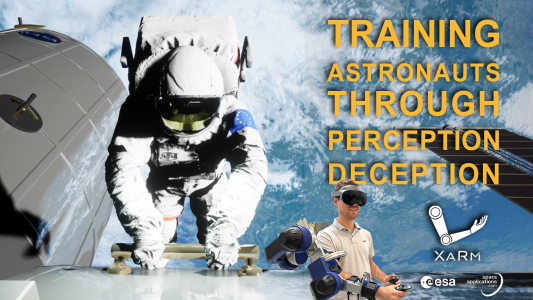X-aRm, a Force-Feedback Device to Train Future Astronauts with eXtended Realities

The outer space is commonly perceived as one of the most hazardous environments for human beings. Nowadays, the training of astronauts relies on a wide range of courses and facilities to prepare them for any situation they may encounter in space. The combination of these training technologies has successfully prepared multiple generations of astronauts. However, these assets lack flexibility to customise the training process, and are limited in scalability to accommodate an increasing number of trainees. Interestingly, many of the technologies used to train astronauts involve manipulation and navigation tasks that require force feedback, which is crucial for the learning process. Previous studies have emphasised the importance of force feedback for multiple critical training tasks in space. Astronauts heavily rely on the sense of force for numerous activities in the space environment. For instance, astronauts aboard the International Space Station (ISS) use a spacesuit called the Extravehicular Mobility Unit (EMU) to perform installation or maintenance tasks known as Extravehicular Activities (EVA). During these missions, astronauts navigate in the space environment by pushing and pulling from handrails, experiencing inertial forces derived from their mass, or performing mechanical tasks using Pistol Grip Tools (PGT). The hypothesis of this work states that the use of multimodal stimuli from Virtual Reality with exoskeleton devices to train future astronauts provide a higher flexibility, scalability, customisation, safety, and immersion compared to traditional training methods.
